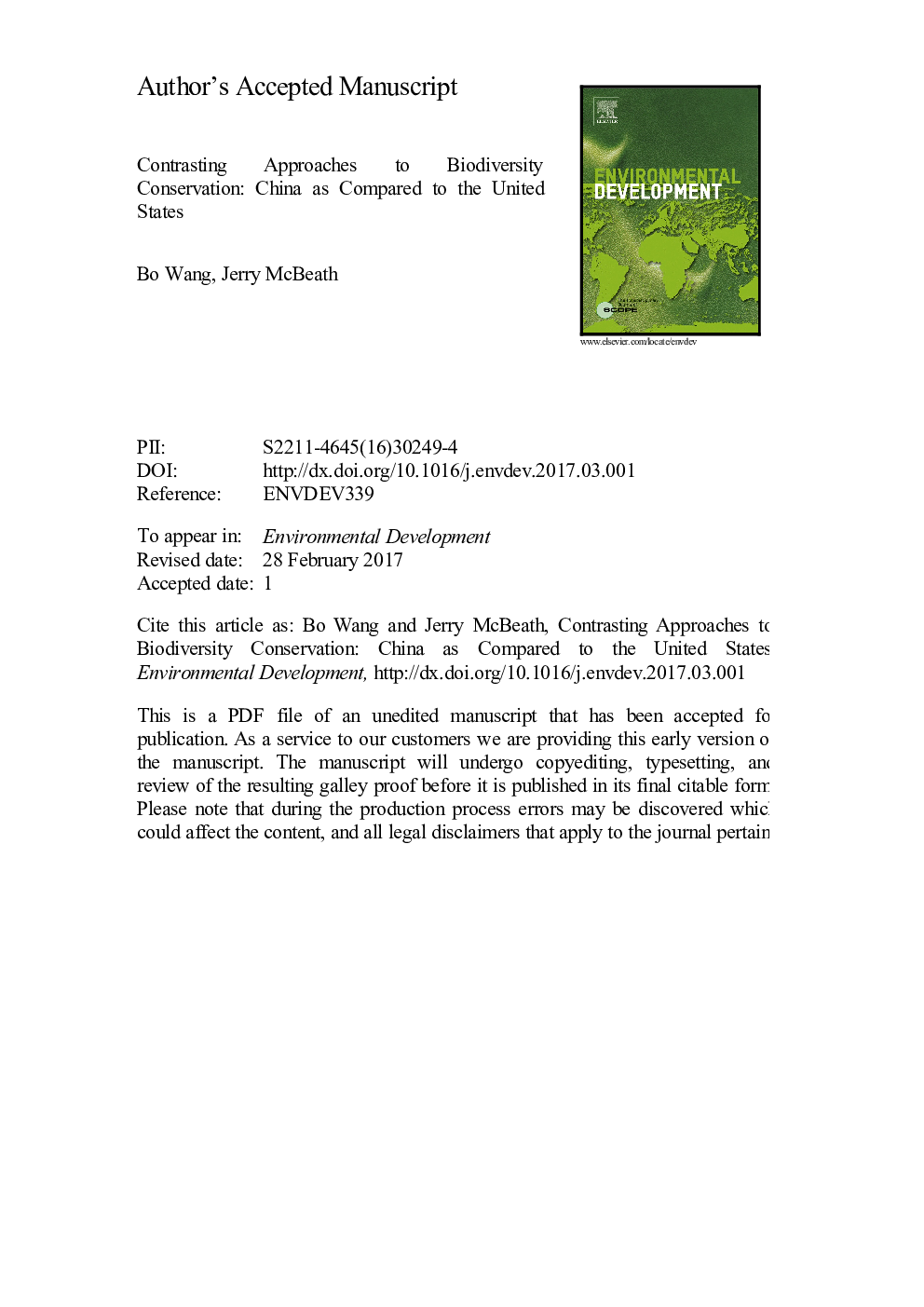| Article ID | Journal | Published Year | Pages | File Type |
|---|---|---|---|---|
| 5744115 | Environmental Development | 2017 | 25 Pages |
Abstract
This essay analyzes the contrasting approaches taken to biodiversity conservation by the world's third largest nation-state, China, as compared to the fourth, the United States. While the primary current cause of loss in diversity of species, populations and ecosystems in China is over-exploitation, in the U.S. it is habitat destruction. Different historical trajectories, for example China's quasi-colonial circumstance from the Opium Wars to the end of World War II, express important social, cultural and political differences. In the U.S. case, the legislative orientation of species protection is distinctive. While both nations have roughly the same proportion of land sequestered into parks, refuges and reserves, the configuration of the two systems is different, with the U.S. having clearer lines of enforcement than China, which suffers from contradictions in policy and implementation.
Related Topics
Life Sciences
Environmental Science
Ecology
Authors
Bo Wang, Jerry McBeath,
